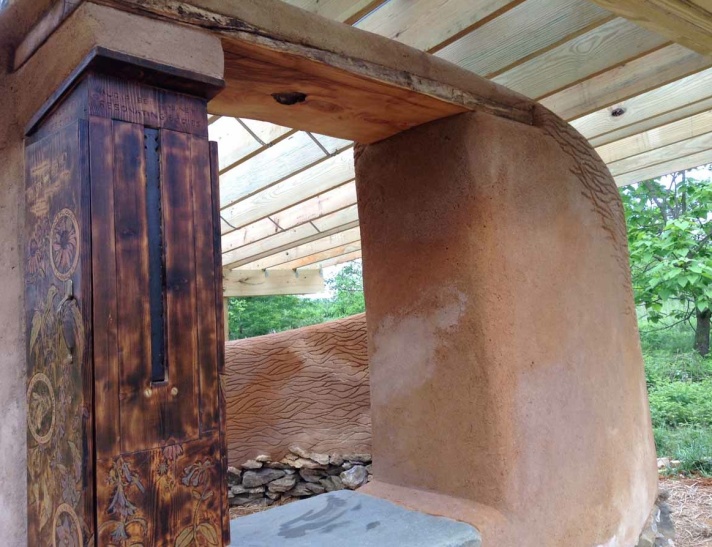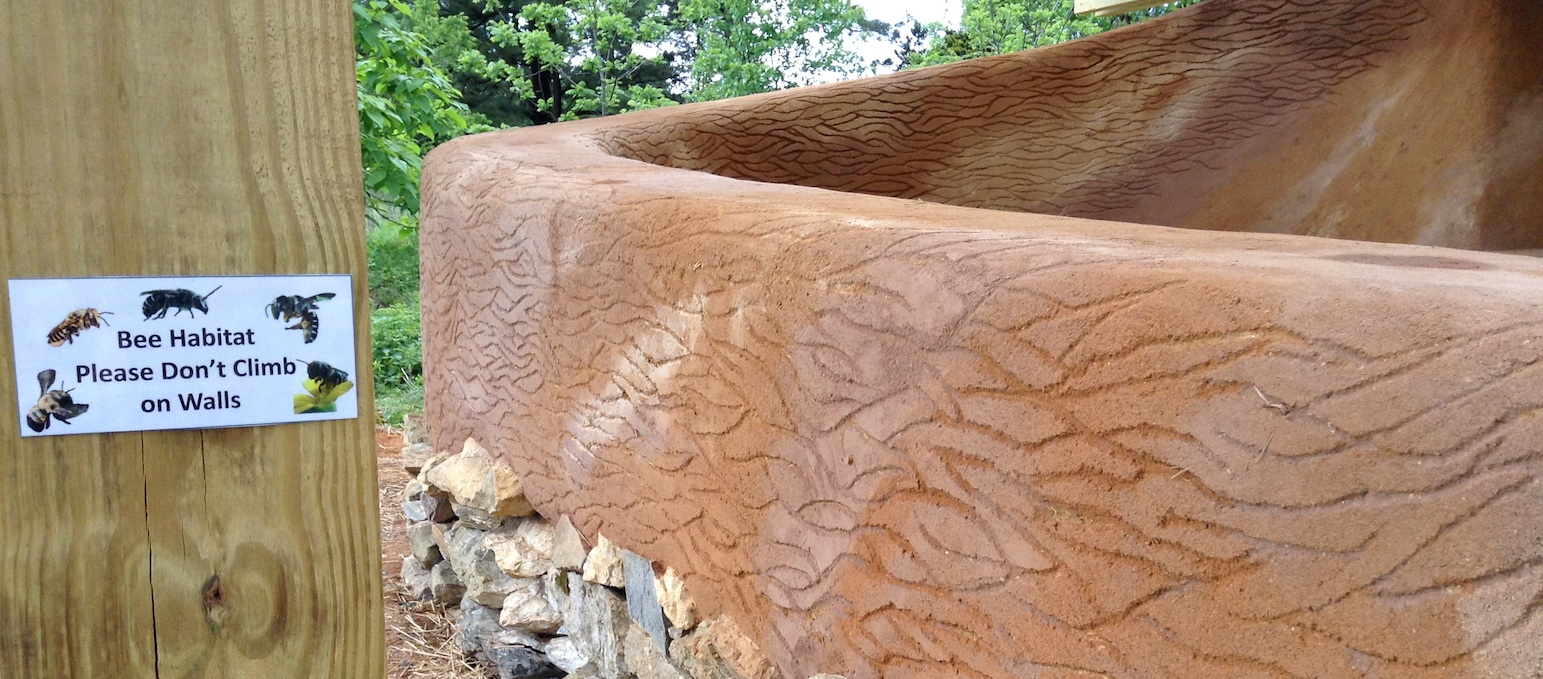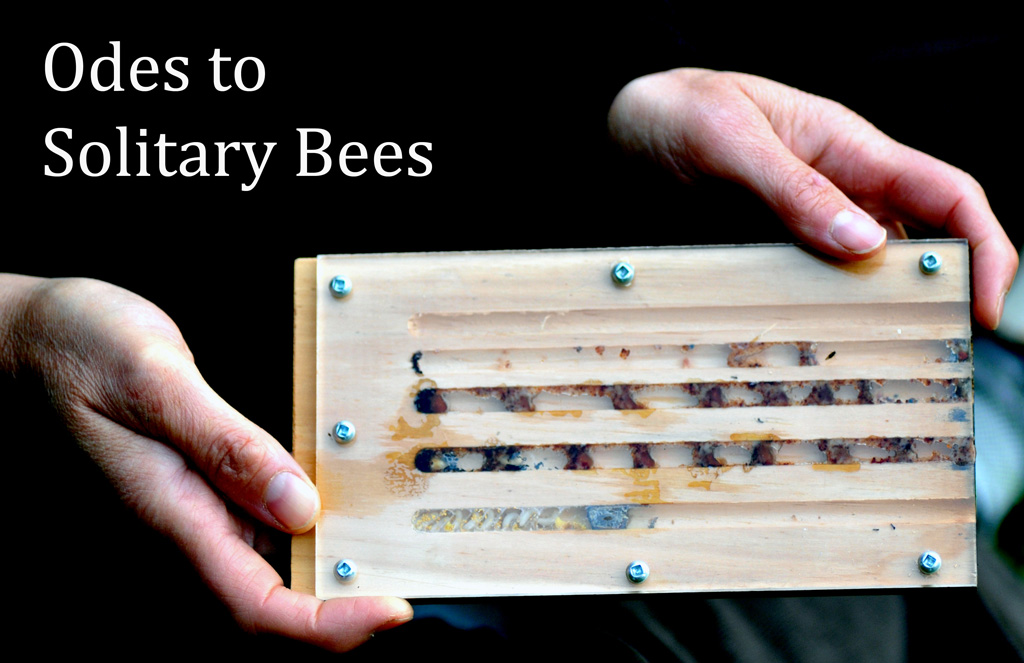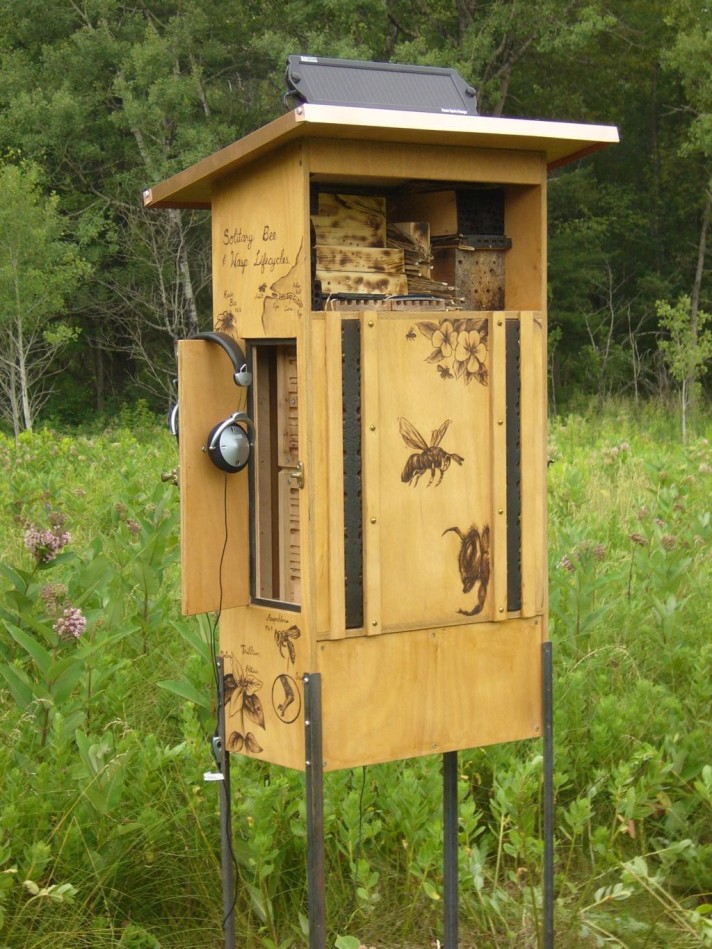Exhibits: These are a Few of Our Favourite Bees (2022) & Bumble Domicile (2008)
• • •
Amplified Habitat Installations for Wild Bees: Sensory Bee Booths & Cabinets | Habitat Walls (2010 – present)
Sarah Peebles & collaborators
These works provide an accessable window to the public to enhance our understanding and appreciation of our local pollination ecology. These are permanent installations which provide nesting habitat and shelter for wild, solitary bees and wasps while allowing the viewer to watch and listen to their activities from the ‘inside’, up close. Select photos to enlarge.
Inhabitants at Sonic Solitaries cabinets with biologist Susan Frye, Toronto.

 Dwelling series of nest sites for native bees: habitat walls with cabinets
Dwelling series of nest sites for native bees: habitat walls with cabinets
Employing a more intimate and participatory methodology… Canadian-American installation artist Sarah Peebles creates works that accentuate bee aesthetic properties by way of lived experience (Parson, 2007). Through the Sensory Bee Cabinets in her Resonating Bodies project (Peebles, 2021), Peebles produces installations that focus attention on the intricacies of solitary wild bee life within their nests, and leverages the act of observation as a creative tool to impart information from the inhabitants (the bee), their habitat, and biology in real-time. Here, the artist transports the observer into the life of the bees through their form, scents, and sounds that results in a complex sensory experience for the audient in an effort to amplify our appreciation of native solitary bees. As a result, Peebles’ work fosters wider discussion and discourse by facilitating aesthetic signal transmission from the bee, to the observer, to the community.
Above: 7.2.1. The Bee as Art and Collaborator; pg 38, Bee Representations in Human Art and Culture through the Ages | Authors: Kit S. Prendergast, Jair E. Garcia, Scarlett R. Howard, Zong-Xin Ren, Stuart J. McFarlane, and Adrian G. Dyer (December 2021 | Art & Perception 10(1):1-62 | DOI:10.1163/22134913-bja10031)
• • •
Odes to Solitary Bees (2010 – 2021+)
Stephen Humphrey & Sarah Peebles
Stephen Humphrey combines macro video, audio and the written word in homage to Toronto’s solitary stem nesting bees in a series of “video poems”. We enter a magnified world where bees create tunnel nests, manipulate pollen and hang out in Peebles’ sensory bee cabinets – abodes designed to bring together sight and sound of animals in motion. Put on your headphone to enjoy!

• • •
Bumble Domicile (2008)
Sarah Peebles, Rob King, Anne Barros, Rob Cruickshank, with the Flower Anther Swabbing Team (F.A.S.T.)
This group show highlighted distinct features of bumble bees – native bees which are social – through observation of the physical world, visual and audio transformations, scent, touch and genetic and other biological information. The installation featured a live colony of bumbles within the gallery which interfaced with gardens & community spaces outside. We introduced solitary bees through playful and informative trading cards, included as a means to contextualize the larger world of wild bees. Bumble Domicile coincided with “A Guide to Toronto’s Pollinators”, written by Laurence Packer and published by the David Suzuki Foundation. The exhibition included talks on related topics by collaborating researchers Laurence Packer, Jessamyn Manson, Peter Hallett and Stephen Buchmann.

• •
See Credits for Artists, collaborating and advising researchers and funders to date. Have a question, feedback or an idea you want to share? Comments are open here.







